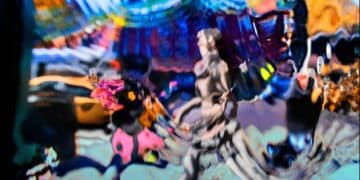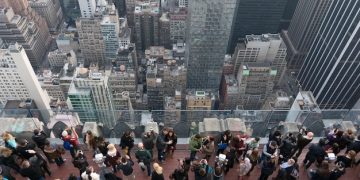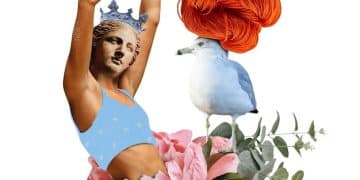How to Invest in Art on a Budget: A Beginner’s Guide
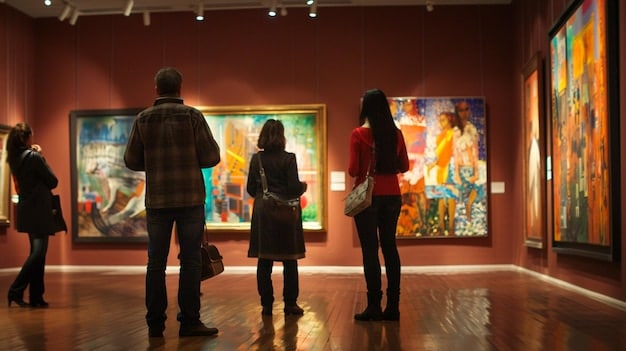
How to Invest in Art Without Breaking the Bank: A Beginner’s Guide explores strategies for art investment accessible to newcomers, including budgeting, researching emerging artists, exploring affordable art forms like prints and photography, leveraging online platforms and auctions, and diversifying your collection to mitigate risk.
Want to dive into the art world but worried about the price tag? This guide, How to Invest in Art Without Breaking the Bank: A Beginner’s Guide, empowers you to start building your art collection without emptying your wallet.
Understanding the Basics of Art Investment
Investing in art doesn’t have to be an exclusive pursuit for the ultra-wealthy. With a bit of knowledge and a strategic approach, anyone can start building an art collection that is both personally rewarding and potentially financially lucrative. This section will cover the fundamental concepts of art investment.
Why Invest in Art?
Investing in art can offer several benefits, both tangible and intangible. Here’s a closer look at the motivations behind art investment:
- Diversification: Art can act as a hedge against traditional market volatility, providing diversification to your investment portfolio.
- Passion: For many, art investment is driven by a genuine love and appreciation for creativity and aesthetics.
- Potential Appreciation: Certain artworks can appreciate significantly in value over time, offering substantial financial returns.
- Cultural Value: Owning art allows you to connect with history, culture, and the artistic expression of different eras and movements.
Defining Your Investment Goals
Before you start buying, it’s essential to define your investment goals. Are you primarily interested in building a collection for personal enjoyment, or are you aiming for significant financial returns? Your goals will influence your investment strategy and the type of art you choose to acquire.
Understanding your objectives is key to making informed purchasing decisions. A clear vision will help you navigate the market, avoid impulsive buys, and focus on pieces that align with your long-term aspirations for your collection.
To summarize, the basics of art investment involve understanding its potential benefits, setting clear goals, and appreciating its unique characteristics as an asset class.
Setting a Realistic Budget for Art Acquisition
One of the most important steps in investing in art without breaking the bank is setting a realistic budget. This will help you avoid overspending and ensure that you can continue to invest in art over time. Here’s how to establish a budget that works for you.
Assessing Your Financial Situation
Start by taking a close look at your overall financial situation. Determine how much you can realistically allocate to art investment without jeopardizing your financial security. Consider your income, expenses, debts, and other investments.
Being honest about your financial situation will prevent you from making rash decisions that affect your stability.
Allocating Funds Strategically
Once you’ve determined your overall budget, allocate funds strategically across different types of art and artists. Consider diversifying your collection by investing in a mix of established and emerging artists, as well as different art forms.
Strategic allocation means not putting all your eggs in one basket. Diversify and explore different forms of art and approaches. This can decrease risk and increase the opportunity for positive revenue.
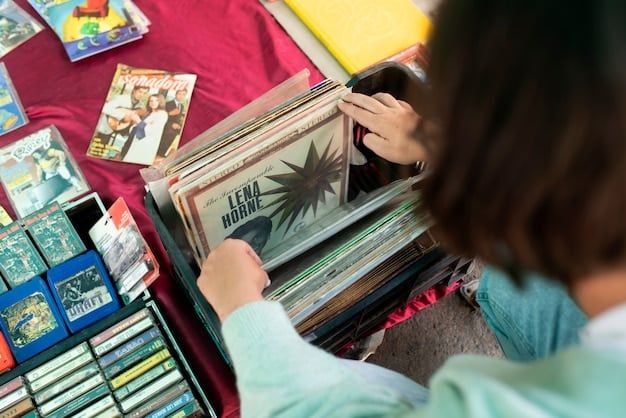
Ultimately, setting a realistic budget involves careful assessment, strategic allocation, and a commitment to staying within your means while pursuing your passion for art.
Researching Emerging Artists and Affordable Art Forms
To invest in art on a budget, it’s crucial to focus on emerging artists and affordable art forms. This approach allows you to acquire unique and potentially valuable pieces without spending a fortune. In this section, we’ll explore ways to discover up-and-coming talent and accessible mediums.
Discovering Up-and-Coming Talent
Attending local art fairs and exhibitions is an excellent way to discover emerging artists. These events often showcase the work of talented individuals who are just starting their careers. Additionally, follow art blogs, magazines, and social media accounts that highlight new talent.
- Visit Local Art Fairs: Engage with artists directly and discover unique pieces at reasonable prices.
- Follow Art Blogs and Magazines: Stay updated on the latest trends and emerging artists in the art world.
- Explore Social Media: Platforms like Instagram and Pinterest are great for discovering new artists and art styles.
Exploring Affordable Art Forms
Prints, photography, and small sculptures are typically more affordable than original paintings. Look for limited-edition prints or photographs by talented artists. These can be a great way to start your collection without a huge initial investment.
Prints and photos allow access to high-quality art for the beginner investor.
Remember, researching emerging artists and affordable art forms is an ongoing process. Stay curious, keep exploring, and be open to discovering hidden gems that fit your budget and aesthetic preferences.
Leveraging Online Platforms and Auctions for Art Acquisition
In today’s digital age, online platforms and auctions provide accessible avenues for art acquisition, especially for budget-conscious investors. These channels offer a wide range of artworks at various price points, making it easier to find pieces that align with your investment goals. This discussion will delve into strategies for leveraging these resources effectively.
Navigating Online Art Marketplaces
Online art marketplaces like Saatchi Art and Artsy offer a vast selection of artworks from artists around the world. These platforms typically provide detailed information about the artists and artworks, as well as secure payment options. Take advantage of search filters to narrow down your options based on price, style, and medium.
Navigating these resources effectively requires filtering and knowing what you´re looking for.
Participating in Online Art Auctions
Online art auctions can be a great way to acquire artworks at competitive prices. Platforms like eBay and LiveAuctioneers host auctions featuring a wide range of art, from contemporary prints to vintage photographs. Before bidding, research the artist and artwork carefully, and set a maximum bid to avoid overspending.
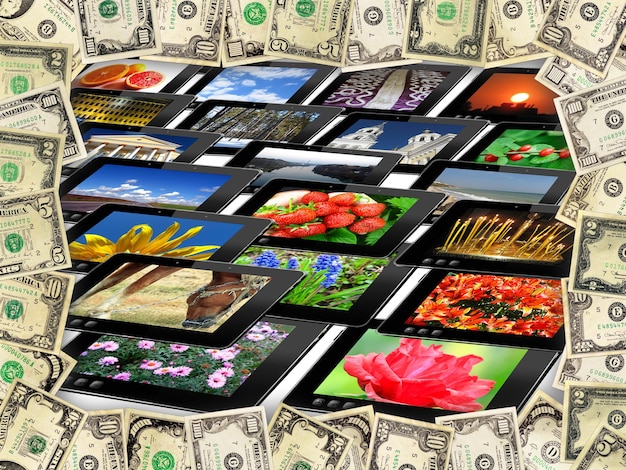
Participating in online art auctions provides a unique opportunity to get access hard to find art at bargain prices.
To recap, leveraging online platforms and auctions requires a strategic approach, combining thorough research, disciplined bidding, and a keen understanding of market dynamics. By mastering these techniques, you can build a diverse and valuable art collection without breaking the bank.
The Importance of Due Diligence and Authentication
When investing in art, due diligence and authentication are crucial steps to protect your investment and ensure that you are acquiring genuine artworks. Taking the time to research artists, inspect artworks, and obtain authentication documents can help you avoid fraud and costly mistakes.
Researching Artists and Provenance
Before acquiring an artwork, thoroughly research the artist’s background, reputation, and auction record. Check for any red flags, such as inconsistent sales history or questionable provenance. If possible, contact the artist or their representative to verify the authenticity of the artwork.
- Check Artist’s Background: Look for their sales history and reputation.
- Verify Authenticity: Contact the artist or their representative, if possible.
- Evaluate Provenance: Track the ownership history.
Inspecting Artworks Carefully
Carefully inspect artworks for any signs of damage, restoration, or forgery. Pay close attention to the materials, techniques, and signatures used by the artist. If possible, examine the artwork in person under good lighting conditions.
Ultimately, the value of due diligence and authentication lies in safeguarding your investment and ensuring that you are acquiring genuine, valuable artworks. By combining research, inspection, and expert advice, you can make informed decisions and build a collection with confidence.
Diversifying Your Art Collection to Mitigate Risk
Diversifying your art collection is a crucial strategy for mitigating risk and maximizing potential returns. Just like with any other investment portfolio, spreading your resources across different types of art, artists, and styles can help protect you from market volatility and unexpected losses. This section will explore effective ways to achieve diversification.
Investing in Various Art Forms
Instead of focusing solely on one type of art, consider diversifying into various forms, such as paintings, sculptures, prints, photography, and mixed media. Each art form has its own market dynamics and investment potential, so diversifying can help balance your overall risk.
Do not put all your eggs in one basket.
Supporting Artists at Different Career Stages
Balance your collection by supporting artists at different stages of their careers. Investing in established artists can provide stability and long-term value, while investing in emerging artists can offer the potential for high growth. A mix of both is generally a good approach.
Mixing investments ensures a more solid approach.
In conclusion, diversifying your art collection is essential for mitigating risk, maximizing potential returns, and building a well-rounded portfolio. By investing in various art forms, supporting artists at different career stages, and diversifying your geographic focus, you can position yourself for long-term success in the art market.
| Key Point | Brief Description |
|---|---|
| 💰 Budgeting | Set a realistic budget and stick to it. |
| 🧑🎨 Emerging Artists | Research and invest in up-and-coming artists. |
| 🖼️ Affordable Art Forms | Explore prints, photos, and small sculptures. |
| 🌐 Online Platforms | Leverage online marketplaces and auctions. |
FAQ
▼
Start by attending local art fairs and exhibitions to discover emerging artists and their affordable works. Research different art forms like prints and photography, which are generally more budget-friendly than original paintings.
▼
Research the artist’s background, reputation, and sales history. If possible, contact the artist or their representative to verify the authenticity of the piece. Inspect the artwork for any signs of damage, restoration, or forgery.
▼
Consider online art marketplaces like Saatchi Art and Artsy, which offer a diverse selection of artworks from artists around the world. Look for online art auctions on platforms like eBay and LiveAuctioneers for competitive prices.
▼
Yes, diversifying your art collection is crucial for mitigating risk. Instead of focusing solely on one type of art, consider investing in various forms like paintings, sculptures, and prints. Support artists at different stages of their careers.
▼
Follow art blogs, magazines, and social media accounts that highlight new talent and trends. Attend local art fairs and exhibitions to engage with artists directly. Stay curious and be open to discovering new talent and art styles.
Conclusion
Investing in art without breaking the bank is entirely achievable with the right strategies. By setting a budget, researching emerging artists, and exploring affordable art forms, you can start building a collection that is both fulfilling and potentially profitable. Remember to always do your due diligence and diversify your investments to mitigate risk.
